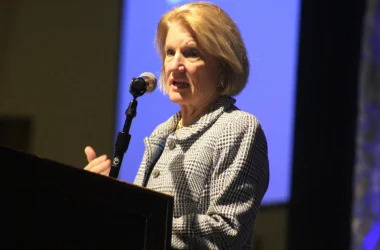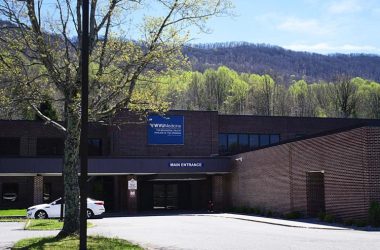By SUZANNE STEWART
The Pocahontas Times
To know the life of award winning author Pearl S. Buck, it is important to begin at the Pearl S. Buck Birthplace in Hillsboro, but to really understand her writing and passion, it is a must to follow her footprints to China.

(Submitted photo)
Buck may have been born in Hillsboro, but her formative years were spent with her missionary parents, Absalom and Caroline “Carrie,” in Suzhou, Nanjing and Mt. Lushan in China.
Birthplace head docent Phyllis Lubin-Tyler prides herself on researching and learning all she can about Buck’s life, but there was something missing – the experience of China.
Lubin-Tyler filled that missing part in September when she traveled to China on the Pearl S. Buck China Footprint Tour, a two-week adventure into Buck’s life in China, which included tours of her former homes and an invitation to the grand opening of the Pearl S. Buck Park and Museum.
“It was my own wish to explore Pearl and her life in China, and it just happened to come up at the right time,” Lubin-Tyler said. “I knew it would be a very once-in-a-lifetime special tour because it was the opening of the Pearl S. Buck Park there. We went from the beginning at Shanghai to Beijing and all the way – we would see the university where Pearl taught and where they lived with [her husband John Lossing Buck] and in Mt. Lushan to see the villa where, in the summertime, Carrie and the girls would escape for the clean air and fresh water, and mountains just like West Virginia.
“It was the most interesting, adventurous thing.”
While China has changed exponentially since Buck lived and worked there, Lubin-Tyler said it was possible to understand what the country was like at that time.
“When you rebuild, some of it stays so they can capture what is left of the past,” she said. “But a lot of the tour guides would say that they wanted such economic growth and to become new modern China with the rest of the world that a lot of them are disappointed that they didn’t preserve more. At least we were on the same place on the planet [as she was] and you can experience it.”
As the tour progressed from city to city, university to university, Lubin-Tyler said it was very obvious that Buck was revered and loved for her writing and her contribution to China’s history.
“University after university – we went to Shanghai, Zhejiang, Nanjing – all the major [universities] had memorial rooms set up, artifacts of Pearl,” she said. “Some of them even had wax figurines. Not everyone knows of Pearl, but certainly those who were into literature and English, writing and the history that she captured. They are now going back and studying her books. She captured [the history] so well in her writings.”
While the tour was based around Buck’s time there, during a visit to one of the family homes, Lubin-Tyler said there was an unexpected mini-adventure. When the tour traveled to the Sydenstricker villa at Mt. Lushan, they were told Pearl’s father’s gravestone was somewhere at the site.
Absalom was buried in China, but due to reconstruction, many gravestones were removed and buildings were constructed on top of cemeteries. Many of the gravestones are stored near the villa, including Absalom’s.
“We got to see Absalom’s gravestone,” she said. “It was up in the villa area in Mt. Lushan. In that mountain – that was my favorite part. I loved it. Their villa was there, all preserved. We went there, and they did a really nice job in preserving that and other British and American villas.”
A lot of gravestones were destroyed, but a select few were stored away behind a villa which was turned into a museum. With the help of a gentleman who cut away overgrowth on a path, Lubin-Tyler and fellow tour members were able to make a special trek to see the gravestones.
“We were on a search to see if it truly did exist,” she said. “They actually got a man with a sickle to cut away the weeds. They said, ‘we’re going to have a makeshift ladder,’ to get up there. You had to be physically fit to maneuver it. We went up behind this wall and they moved the overgrowth away and there it was – it said ‘Absalom Sydenstricker.’ That was unbelievable.”
The two-week adventure also included a symposium focused on Buck’s contributions to literature and history, and the dedication of the Pearl S. Buck Park, near her former home, now the Museum in Zhejiang.

The dedication included speakers and an art exhibit of sculptures, paintings, calligraphy and plastic arts. The park features a bronze statue of Buck and a pond. Dignitaries unveiled a stone sculpture dedicating the park to Buck’s memory.
After her long journey and first trek out of the United States, Lubin-Tyler said she feels she knows Pearl better and has an understanding of her life in America and China.
“The interesting thing is her life was divided in half – forty years in China and forty years in America,” she said. “She was always between two worlds. Whatever imprints you’re making right out of the womb, even though here she was three months old to five months old, by the time they got to China, that imprint on her, that was her.”
Buck had American roots, but China was her heart.
Suzanne Stewart may be contacted at [email protected]
See more from The Pocahontas Times





